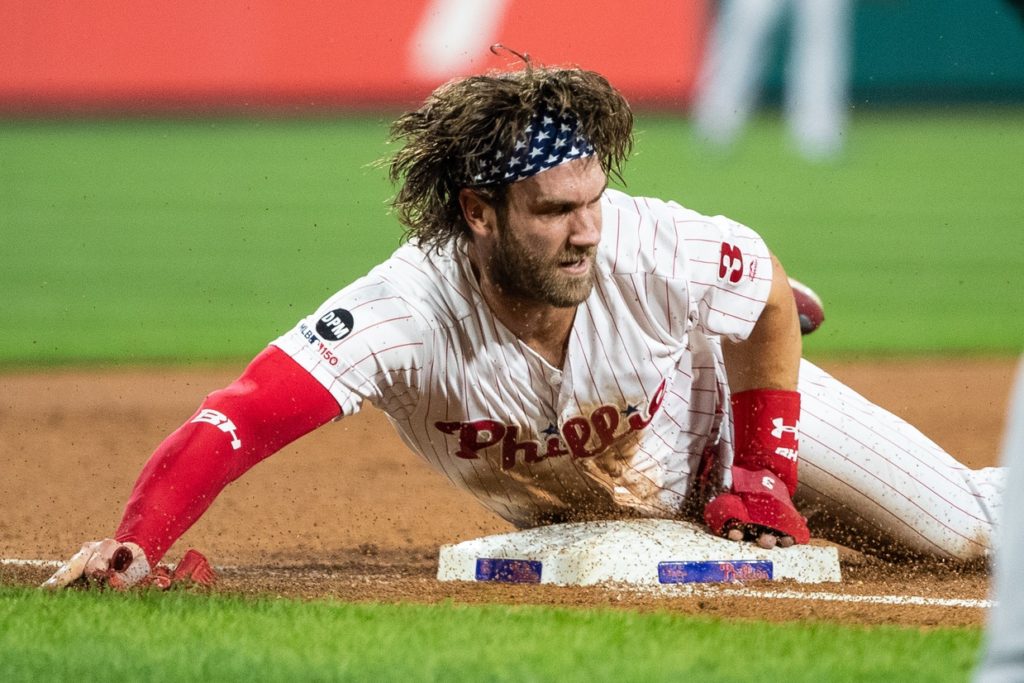Ad Disclosure
It’s O.K. To Admit You’re Excited That Baseball Is Back
By Bob Wankel
Published:

You’re a little bit excited. You know it.
After weeks of leaked discord between baseball’s players and owners, the two sides put the finishing touches on a return to play last night that will bring the game back late next month. By now, you’ve likely heard about some of the wrinkles for 2020, like a 60-game season packed with modifications such as a universal DH, an extra-inning speed up, several health guidelines, and an August 31 trade deadline that arrives less than 40 days after the season’s dawn.
And, of course, this:
Important info from MLB's 101-page Operations Manual:
"Home Clubs may have their mascot in the ballpark if they choose, however under no circumstances are mascots permitted on the field of play or in any other Restricted Area on game days."
— Matt Breen (@matt_breen) June 24, 2020
The Phanatic will be sunbathing in Ashburn Alley all by his lonesome this season. Poor guy.
Baseball, like everything else in 2020, is going to be difficult. It’s going to look weird, it’s going to feel weird, and it remains in a tenuous situation given the ongoing obstacles presented by COVID-19. For now, however, it is back, and it still matters–whether you want to admit it or not.
Many of us spent the better part of the last two months rightfully criticizing the maddening inability of owners and players to find accord in the midst of a pandemic. But in doing so, plenty offered takes that can deemed nothing other than reactionary exaggerations. Baseball is dead. Baseball doesn’t even matter. I don’t care–they blew it.
To borrow a favorite line of my colleague Kevin Kinkead, two things can be true:
- Baseball has big-picture problems. Impending labor issues following the 2021 season, poor player marketing, limiting social media policies, and slowing on-field action are all issues that need to be addressed moving forward.
- Baseball is dead is a bandwagon mindset assumed by the cool kids at the party who want to deliver trendy takes.
Listen, there’s no doubt that it has been hard to stave off the fatigue of a news update rollercoaster engineered by Bob Nightengale and Jon Heyman. Included in the glossary of terms I’m sure absolutely nobody wants to hear ever again:
- pro rata
- counterproposal
- framework
- grievance
- standoff
- ‘when and where’
But the turbulence of this prolonged labor battle has temporarily ceased. There will be baseball, and I suspect there will be significant interest in it.
The only plan is an imperfect plan in the middle of a pandemic and much can still go wrong, but the arranged 60-game sprint of this season should provide plenty of natural intrigue. The universal DH and extra inning tweaks will spur debate and perhaps even controversy as the season progresses, and while many do not and will not like the changes, the NFL is a prime example of how displeasure over rule changes help keep a league in the conversation on influencer shows like First Take.
Far more importantly, local-market interest should be high in several cities.
Through 50 games last season, a total of 18 teams either held or were within three games of a postseason spot. In the event that a similar dynamic unfolds this year, more than half of the league will be within striking distance of a playoff spot with 10 games to go. Many teams are going to be in it, perhaps even some that originally began spring training 1.0 with no designs of making such a run.
Crap on baseball and the overall state of the game for what is warranted, and there’s plenty, but one thing remains true – baseball still matters in Philadelphia and winning baseball gets noticed. This same principle applies in many cities across the league.
While baseball missed an opportunity to steal the spotlight for most of July, fan appetite will remain strong enough to regularly consume multiple competing products. That doesn’t mean the average fan will be settling in for Tigers/White Sox on a Tuesday, but in-market interest can and will co-exist with competing leagues.
Baseball is back. And it’s O.K. to admit that you’re actually excited about it.
Bob Wankel covers the Phillies for Crossing Broad. He is also the Vice President of Sports Betting Content at SportRadar. On Twitter: @Bob_Wankel E-mail: b.wankel@sportradar.com